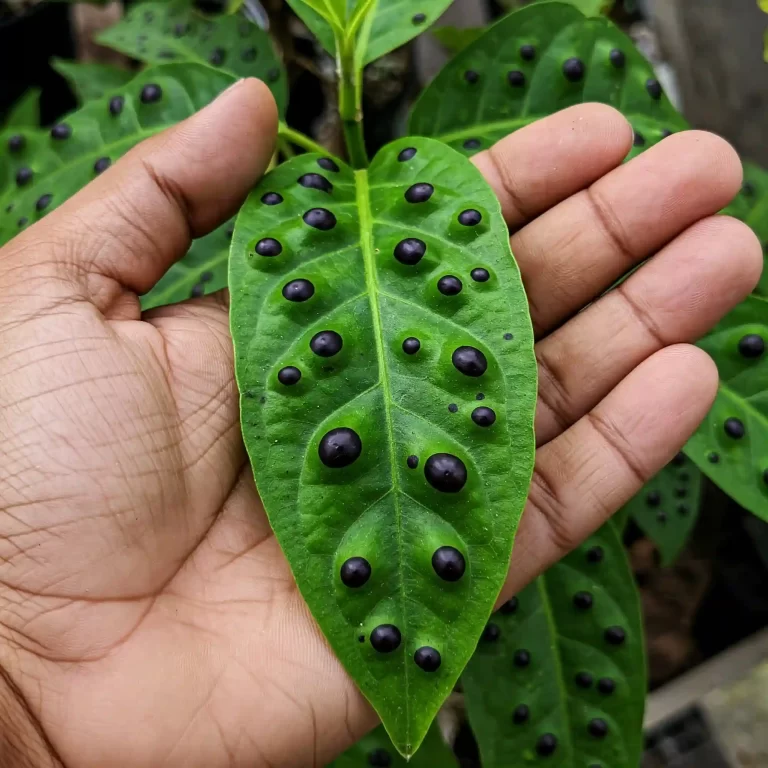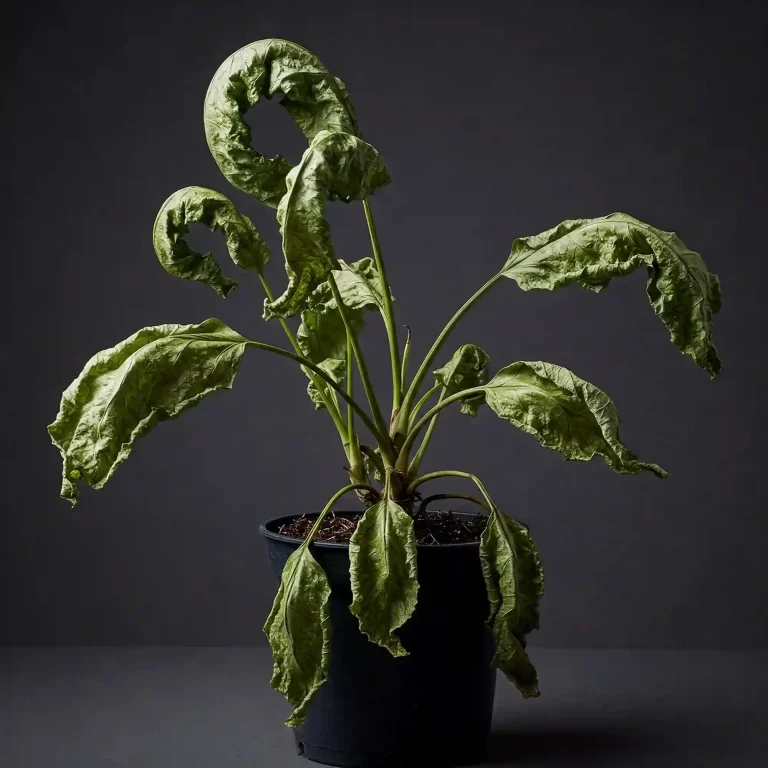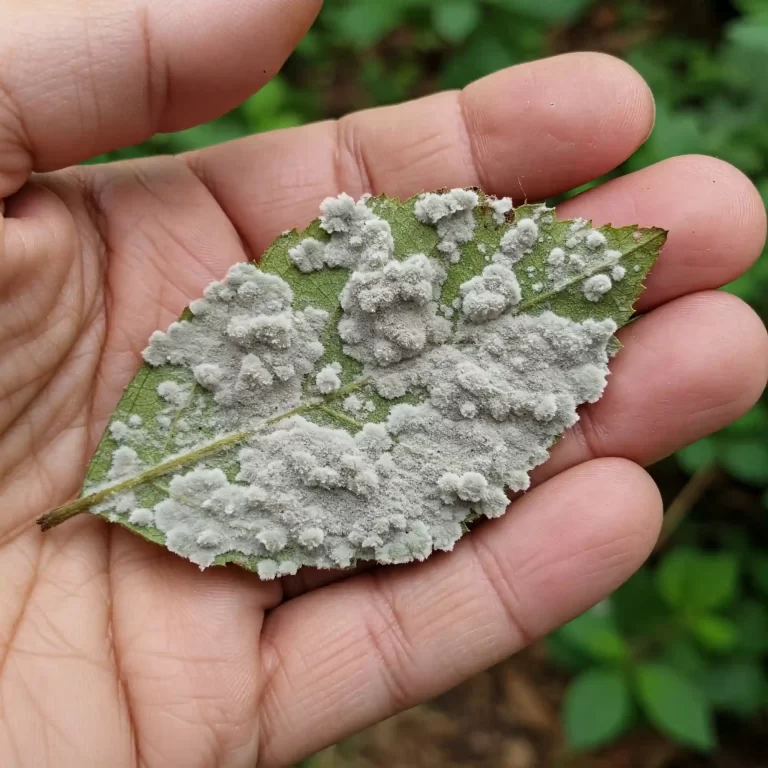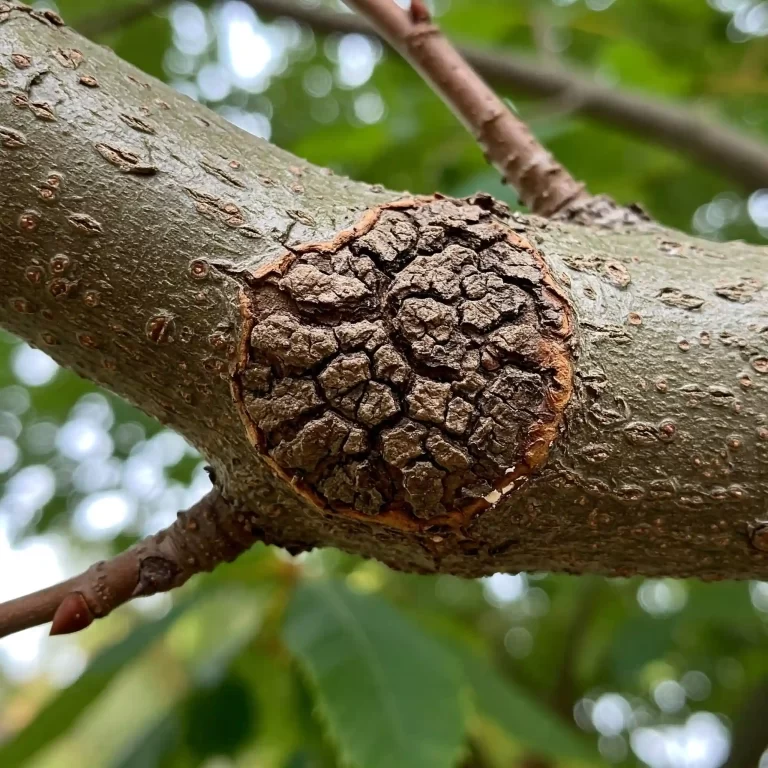Key Takeaways
| Light | Soil | Water | Fertilizer | Pruning | Propagation |
|---|---|---|---|---|---|
| Bright indirect light | Well-draining, rich in organic matter, slightly acidic | Thoroughly when top inch of soil is dry, less in winter | Balanced houseplant fertilizer diluted to half strength, once a month in growing season, none in winter | Remove dead or damaged leaves, cut off flowers if desired, pinch off tips of new growth to encourage bushiness | Stem cuttings with at least two nodes, dip in rooting hormone, insert in moist soil, keep warm until roots form |
If you are looking for a houseplant that is easy to care for and has stunning foliage, you might want to consider the ellen pilea. This plant has dark green leaves with silver markings that resemble watermelon rinds, hence its other common names, such as silver-plated pilea, aluminum plant, or watermelon pilea. The ellen pilea is a native of Vietnam and China, where it grows in the moist and shady forests. It belongs to the nettle family, but unlike its stinging relatives, it is harmless and friendly.
The ellen pilea is a slow-growing plant that can reach up to 12 inches in height and width. It has a compact and bushy habit that makes it ideal for small spaces and containers. It rarely blooms, but if it does, the flowers are tiny and white or pink, and can be easily removed if you prefer. The ellen pilea is not only beautiful, but also beneficial, as it can purify the air, reduce stress, and enhance your mood.
In this article, we will show you how to grow and care for the ellen pilea, and provide you with some tips and tricks to keep it healthy and happy. We will cover the following topics:
- Light Requirements
- Soil and Water Needs
- Fertilizer and Feeding Schedule
- Pruning and Propagation
- Benefits and Problems
By following these simple guidelines, you will be able to enjoy the ellen pilea for years to come.
Light Requirements
One of the most important factors for the ellen pilea is light. This plant prefers bright indirect light, which means that it should receive plenty of natural light, but not direct sunlight. Direct sunlight can burn the leaves and cause them to lose their color and pattern. On the other hand, too little light can make the plant leggy and weak, and reduce its growth and attractiveness.
To provide the ellen pilea with the optimal light conditions, you should place it near a window that receives filtered or diffused light, such as through a sheer curtain, a blind, or a shade. You can also place it on a shelf, a table, or a stand that is close to a light source, but not directly under it. Avoid placing it in a dark corner, a closet, or a basement, as these places will not provide enough light for the plant.
Another thing to keep in mind is to rotate the plant regularly, at least once a week, to prevent it from leaning toward the light source. This will help the plant maintain a balanced and symmetrical shape, and prevent it from becoming lopsided or uneven.
Soil and Water Needs
The next factor to consider for the ellen pilea is the soil and water needs. This plant likes well-draining soil that is rich in organic matter and slightly acidic. You can use a peat moss-based potting mix with some perlite or vermiculite added for aeration. This will ensure that the soil is loose, airy, and moist, but not soggy or waterlogged. You can also add some compost, worm castings, or leaf mold to the soil to increase its fertility and nutrient content.
The ellen pilea needs regular watering, but not too much. Overwatering or underwatering can both cause problems for the plant, such as root rot, wilting, or leaf drop. To avoid these issues, you should water the plant thoroughly when the top inch of the soil feels dry to the touch. You can check the soil moisture level by using your finger, a wooden stick, or a moisture meter. You should water the plant until the water drains out of the bottom of the pot, and then discard the excess water from the saucer. You should never let the plant sit in water, as this can cause the roots to rot and the plant to die.
You should also reduce the watering frequency in the winter, when the plant is dormant and does not need as much water. You can water the plant once every two weeks, or when the soil is almost completely dry. You can also mist the leaves occasionally with a spray bottle to increase the humidity around the plant, or place the plant on a tray of pebbles with water. This will help the plant cope with the dry air from the heating system, and prevent the leaves from curling or browning.
Fertilizer and Feeding Schedule
The ellen pilea does not need a lot of fertilizer, as it is a slow-growing plant that can be sensitive to salt buildup. Too much fertilizer can burn the roots and the leaves, and cause the plant to lose its color and pattern. However, some fertilizer can help the plant grow and thrive, especially during the growing season, from spring to fall.
You can use a balanced houseplant fertilizer, such as a 10-10-10 or a 20-20-20 formula, diluted to half strength, and follow the instructions on the label. You can feed the plant once a month, or every other month, depending on the plant’s needs and the soil’s quality. You should not fertilize the plant in the winter, when the plant is resting and does not need any extra nutrients.
You should also flush the soil occasionally with water to prevent salt accumulation and nutrient imbalance. This will help the soil stay fresh and healthy, and prevent the plant from suffering from fertilizer burn or deficiency. You can flush the soil once every two or three months, or whenever you notice a white crust on the surface of the soil or the rim of the pot.
Pruning and Propagation
The ellen pilea does not require much pruning, except for removing dead or damaged leaves, and maintaining the shape and size of the plant. You can use a sharp and sterile pair of scissors or pruners to cut off any leaves that are yellow, brown, or black, or that have holes, spots, or tears. You can also cut off any flowers that appear on the plant, if you wish. The flowers are tiny and inconspicuous, and do not add much to the plant’s appearance. However, some people like to keep them, as they are a sign of the plant’s health and maturity.
You can also pinch off the tips of new growth to encourage a bushy habit. This will help the plant produce more branches and leaves, and prevent it from becoming too tall or leggy. You can pinch off the tips with your fingers, or use a pair of scissors or pruners. You can do this once every month, or whenever you notice the plant becoming too long or thin.
The ellen pilea can be easily propagated by stem cuttings, which is a simple and fun way to multiply the plant. You can use the cuttings that you obtain from pruning, or take some specifically for propagation. You will need the following materials and methods:
- A 4-inch stem with at least two nodes (the points where the leaves attach to the stem)
- A sharp and sterile pair of scissors or pruners
- A small pot with moist potting soil
- A rooting hormone (optional)
- A plastic bag or a dome (optional)
To propagate the ellen pilea by stem cuttings, follow these steps:
- Cut a 4-inch stem from the mother plant, just below a node. Make sure the stem is healthy and has at least two nodes.
- Remove the lower leaves from the stem, leaving only one or two leaves at the top.
- Dip the cut end of the stem in rooting hormone, if you have any. This will help the stem form roots faster and easier.
- Insert the stem into the moist potting soil, about an inch deep. Make sure the node is buried in the soil, as this is where the roots will emerge.
- Press the soil firmly around the stem, and water it lightly.
- Cover the pot with a plastic bag or a dome, if you have any. This will create a humid and warm environment for the stem, and prevent it from drying out.
- Place the pot in a bright and warm spot, but not in direct sunlight. The ideal temperature for rooting is between 70°F and 80°F.
- Keep the soil moist, but not soggy, and mist the leaves occasionally with water.
- Check the stem for roots after two or three weeks, by gently tugging on it. If you feel some resistance, it means that the stem has rooted. If not, leave it for another week or two, and try again.
- Once the stem has rooted, you can remove the plastic bag or the dome, and transplant the stem to a larger pot. You can also pinch off the tip of the new growth to encourage branching.
You can also propagate the ellen pilea by division, which is another easy and quick way to multiply the plant. To propagate the ellen pilea by division, you will need the following materials and methods:
- The mother plant and its pot
- A sharp and sterile knife or a spade
- One or more pots with fresh potting soil
- A watering can
To propagate the ellen pilea by division, follow these steps:
- Remove the mother plant from its pot, and gently shake off the excess soil from the roots. You can also rinse the roots with water to make them easier to see and handle.
- Examine the root system, and look for natural divisions or clusters of stems and roots. You can also cut the root ball into two or more sections, depending on the size and shape of the plant.
- Separate the sections carefully, making sure that each one has at least one stem and a few roots. You can use a knife or a spade to cut through the roots, if necessary.
- Fill the new pots with fresh potting soil, and make a hole in the center of each one.
- Place one section of the plant in each pot, and press the soil firmly around the roots. Make sure the plant is at the same level as it was in the original pot, and that the leaves are above the soil surface.
- Water the plants well, and place them in a bright and warm spot, but not in direct sunlight. The ideal temperature for recovery is between 70°F and 80°F.
- Keep the soil moist, but not soggy, and mist the leaves occasionally with water.
- Wait for the plants to establish and grow new leaves, which may take a few weeks or months, depending on the season and the plant’s condition.
Benefits and Problems
The ellen pilea is not only a beautiful houseplant, but also a beneficial one. It can provide various benefits, such as improving the air quality, reducing stress, and enhancing your mood. Here are some of the benefits of the ellen pilea:
- Air-purifying: The ellen pilea can absorb and filter some of the harmful toxins and pollutants from the air, such as formaldehyde, benzene, and xylene. These substances can come from sources such as furniture, paint, cleaning products, or cigarette smoke, and can cause health problems such as headaches, allergies, or respiratory issues. The ellen pilea can help to remove these toxins and improve the air quality in your home or office.
- Stress-relieving: The ellen pilea can also help to reduce stress and anxiety, which are common problems in today’s busy and hectic world. Studies have shown that having plants in your environment can lower your blood pressure, heart rate, and cortisol levels, which are associated with stress. Plants can also boost your mood, creativity, and productivity, and make you feel more relaxed and calm.
- Mood-enhancing: The ellen pilea can also enhance your mood and happiness, as it can bring a touch of nature and beauty to your space. The dark green and silver foliage of the ellen pilea can create a contrast and a focal point in your room, and add some color and texture to your decor. The ellen pilea can also stimulate your senses, such as your sight, smell, and touch, and make you feel more connected and alive.
However, the ellen pilea can also face some problems, such as pests, diseases, or environmental stress. These problems can affect the plant’s health and appearance, and cause it to suffer or die. Here are some of the potential problems that the ellen pilea can face, and how to prevent and treat them:
- Pests: The ellen pilea can be attacked by some common pests that can feed on the plant’s sap, leaves, or roots, and cause damage or disease. Some of the pests that can affect the ellen pilea are mealybugs, spider mites, scale insects, aphids, or thrips. These pests can cause symptoms such as yellowing, curling, or dropping of leaves, sticky or cottony substances on the plant, or small dots or bumps on the stems or leaves. To prevent and treat these pests, you should inspect the plant regularly, and remove any infested parts with a pair of scissors or pruners. You can also wipe the plant with a damp cloth or a cotton swab dipped in alcohol, or spray the plant with a solution of water and mild soap, neem oil, or insecticidal soap. You should also isolate the infected plant from other plants, and avoid overwatering or overfertilizing, as these can attract more pests.
- Diseases : The ellen pilea can also be affected by some diseases that can be caused by fungi, bacteria, or viruses, and can spread through the soil, water, or air. Some of the diseases that can affect the ellen pilea are root rot, leaf spot, powdery mildew, or mosaic virus. These diseases can cause symptoms such as wilting, browning, or rotting of roots, stems, or leaves, spots, patches, or coatings on the leaves, or distorted or mottled leaves. To prevent and treat these diseases, you should use clean and sterile tools and pots, and avoid injuring or wounding the plant. You should also avoid overwatering or underwatering, and provide good drainage and ventilation for the plant. You can also apply some fungicides or bactericides, or remove and dispose of the infected parts or plants, depending on the severity and type of the disease.
- Environmental stress: The ellen pilea can also suffer from some environmental stress factors that can affect its growth and appearance. Some of the environmental stress factors that can affect the ellen pilea are temperature, humidity, or drafts. The ellen pilea is a tropical plant that likes warm and humid conditions, and does not tolerate cold or dry air. The ideal temperature range for the ellen pilea is between 60°F and 80°F, and the ideal humidity level is between 40% and 60%. You should avoid exposing the plant to temperatures below 50°F or above 90°F, or to sudden changes in temperature, such as from heating or cooling systems, or from moving the plant indoors or outdoors. You should also avoid placing the plant near vents, fans, windows, or doors, where it can receive cold or hot drafts, or strong winds. You can use a thermometer and a hygrometer to monitor the temperature and humidity levels around the plant, and adjust them accordingly. You can also use a humidifier, a pebble tray, or a misting bottle to increase the humidity around the plant, or a heater, a cooler, or a curtain to regulate the temperature around the plant.
Conclusion
The ellen pilea is a stunning houseplant that is easy to grow and care for, as long as you follow some simple guidelines. By providing the plant with the right light, soil, water, fertilizer, pruning, and propagation conditions, you will be able to enjoy its dark green and silver foliage for years to come. The ellen pilea is not only a beautiful plant, but also a beneficial one, as it can purify the air, reduce stress, and enhance your mood.
We hope this article has helped you to learn more about the ellen pilea, and how to grow and care for it. If you have any questions, feedback, or experience with the ellen pilea, please feel free to share them with us in the comments section below. We would love to hear from you. Thank you for reading, and happy gardening!




